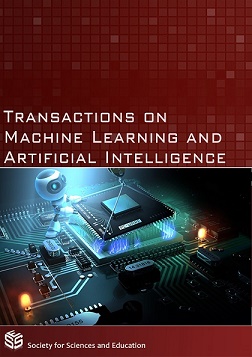A Computational Algorithm for Simultaneously Creating Alternatives to Optimal Solutions
DOI:
https://doi.org/10.14738/tmlai.55.3580Keywords:
Biologically-inspired Metaheuristics, Firefly Algorithm, Modelling to generate alternativesAbstract
In solving many practical mathematical programming applications, it is generally preferable to formulate several quantifiably good alternatives that provide distinct perspectives to the particular problem. This is because decision-making typically involves complex problems that are riddled with incompatible performance objectives and contain competing design requirements which are very difficult – if not impossible – to capture and quantify at the time that the supporting decision models are actually constructed. There are invariably unmodelled design issues, not apparent at the time of model construction, which can greatly impact the acceptability of the model’s solutions. Consequently, it is preferable to generate several, distinct alternatives that provide multiple, disparate perspectives to the problem. These alternatives should possess near-optimal objective measures with respect to all known modelled objective(s), but be fundamentally different from each other in terms of their decision variables. This solution approach is referred to as modelling to generate-alternatives (MGA). This paper provides an efficient computational procedure for simultaneously generating multiple different alternatives to optimal solutions that employs the Firefly Algorithm. The efficacy of this approach will be illustrated using a well-known engineering optimization benchmark problem..
References
(1) Brugnach, M., A. Tagg,, F. Keil, and W.J. De Lange, Uncertainty matters: computer models at the science-policy interface. Water Resources Management, 2007. 21: p. 1075-1090.
(2) Janssen, J.A.E.B., M.S. Krol, R.M.J. Schielen, and A.Y Hoekstra, The effect of modelling quantified expert knowledge and uncertainty information on model based decision making. Environmental Science and Policy, 2010. 13(3): p. 229-238.
(3) Walker, W.E., P. Harremoes, J. Rotmans, J.P. Van der Sluis, M.B.A. Van Asselt, P. Janssen, and M.P. Krayer von Krauss, Defining uncertainty – a conceptual basis for uncertainty management in model-based decision support. Integrated Assessment, 2003. 4(1): p. 5-17.
(4) Yeomans, J.S., and Y Gunalay, Simulation-Optimization Techniques for Modelling to Generate Alternatives in Waste Management Planning. Journal of Applied Operational Research, 2011. 3(1): p. 23-35.
(5) Brill, E.D., S.Y. Chang, and L.D Hopkins, Modelling to generate alternatives: the HSJ approach and an illustration using a problem in land use planning. Management Science. 1982. 28(3): p. 221-235.
(6) Imanirad, R., and J.S. Yeomans, Modelling to Generate Alternatives Using Biologically Inspired Algorithms. in Swarm Intelligence and Bio-Inspired Computation: Theory and Applications, X.S. Yang, Editor 2013. Amsterdam: Elsevier (Netherlands). p. 313-333.
(7) Imanirad, R., X.S. Yang, and J.S. Yeomans, Modelling-to-Generate-Alternatives Via the Firefly Algorithm. Journal of Applied Operational Research. 2013. 5(1): p. 14-21.
(8) Imanirad, R., X.S. Yang, and J.S. Yeomans, A Concurrent Modelling to Generate Alternatives Approach Using the Firefly Algorithm. International Journal of Decision Support System Technology. 2013, 5(2): p. 33-45.
(9) Imanirad, R., X.S. Yang, and J.S. Yeomans, A Biologically-Inspired Metaheuristic Procedure for Modelling-to-Generate-Alternatives. International Journal of Engineering Research and Applications. 2013, 3(2):
p. 1677-1686.
(10) Yang, X.S., Firefly Algorithms for Multimodal Optimization. Lecture Notes in Computer Science. 2009, 5792: p. 169-178.
(11) Yang, X.S., Nature-Inspired Metaheuristic Algorithms 2nd Edition 2010, Frome: Luniver Press (United Kingdom).
(12) Imanirad, R., X.S. Yang, and J.S. Yeomans, A Computationally Efficient, Biologically-Inspired Modelling-to-Generate-Alternatives Method. Journal on Computing. 2012, 2(2): p. 43-47.
(13) Imanirad, R., X.S. Yang, and J.S. Yeomans, A Co-evolutionary, Nature-Inspired Algorithm for the Concurrent Generation of Alternatives. Journal on Computing. 2012, 2(3): p. 101-106.
(14) Yeomans, J.S., An Efficient Computational Procedure for Simultaneously Generating Alternatives to an Optimal Solution Using the Firefly Algorithm, in Nature-Inspired Algorithms and Applied Optimization, Yang, X.S. Editor 2018. Heidelberg (Springer), Germany. Forthcoming.
(15) Gandomi, A.H., X.S. Yang, and A.H Alavi, Mixed Variable Structural Optimization Using Firefly Algorithm. Computers and Structures. 2011, 89(23-24): p. 2325-2336.
(16) Cagnina, L.C., C.A. Esquivel, and C.A Coello, Solving Engineering Optimization Problems with the Simple Constrained Particle Swarm Optimizer. Informatica. 2008, 32: p. 319-326.
(17) Baugh, J.W., S.C. Caldwell, and E.D Brill, A Mathematical Programming Approach for Generating Alternatives in Discrete Structural Optimization. Engineering Optimization. 1997, 28(1): p. 1-31.
(18) Zechman, E.M., and S.R. Ranjithan, An Evolutionary Algorithm to Generate Alternatives (EAGA) for Engineering Optimization Problems. Engineering Optimization. 2004,. 36(5): p. 539-553.






